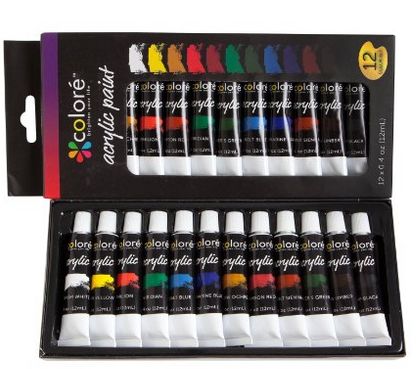Remember when you were in elementary school and painting seemed so simple since your teacher just handed you art supplies and helped wash brushes afterwards? Approaching the medium as a elderly artist, you need to understand paintbrush materials and ways to properly care for your brushes.

First, you have to decide regardless of whether you will be needing soft or stiff hairs for your paintbrush. May be produced of natural hairs or synthetic fibers. A skinny paintbrush is good when you need to complete detailed work or precise painting. It enables you to definitely spread paint easily. Hard bristles alternatively are better for manipulating thick paint. This allows you to create brush marks inside the paint that can be seen on the canvas. Vincent van Gogh’s jobs are renowned for this technique, as evidenced by his painting The Starry Night.
Most purists will claim that natural hair will almost always be finer quality than synthetic fiber for the flexibility and strength. Hair for paintbrushes originates from animals including Sable, squirrel, hog, camel, ox, pony and goat. In the event the looked at using hair from one of such animals makes you squeamish or perhaps you have ideological difficulties with this, do not fear: modern acrylic have come quite a distance and therefore are much less expensive than their natural hair counterparts.
The next task is to find out a little bit about paintbrush anatomy. The handle is often manufactured from wood and it is called the ferrule. This sports ths hairs or bristles. The tip from the bristles is known as the toe.
When deciding which paintbrush to use it is very important to learn how big is the toothbrush. This is based on investigating various on the side of the handle. The littlest dimension is 00 as well as 0, 1, 2 and so on. In case you are buying online it is important to see a picture of the brush you’re purchasing. Two brushes sized exactly the same can be unique due to amount of bristles and also the width in the handle. This challenge might be alleviated should you shop in a actual store or happen to be knowledgeable about the emblem of brush.
It will take a lot of time and money to get the right paintbrush, in order that it is sensible to take care of them, including proper cleaning after each use.
Prior to getting started, be sure you have gentle soap (or turpentine if appropriate) plus some tissue. You will also need lukewarm water and a spot to dry your brushes.
Wipe off of the excess paint by using a soft cloth or tissue. Then, rinse your brushes in turpentine if you are using oils, but use lukewarm water if you’re paint is water-based. Trouble could cause the hairs of the brush to fallout. Afterwards, gently wash your brushes with mild soap. Repeat all over again as many times as necessary until no color is released as well as your brush returns towards the original color. Next rinse your paintbrush in clean water. Remember to get rid of the extra water after this. If your brushes seem misshapen, make use of fingers to gently bring the comb head back for the original shape.
Congratulations, you are ready to dry the paintbrushes. Wrap the bristles in tissue or toilet paper while they’re wet. Once the bristles dry they’ll contract in this manner and may maintain their shape. Allow the brushes dry at room temperature. Don’t rest them on the head because this is another potential hazard to maintaining appropriate shape.
More details about art canvas take a look at our new web portal: this
